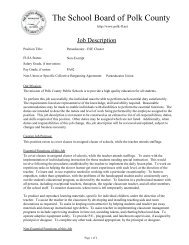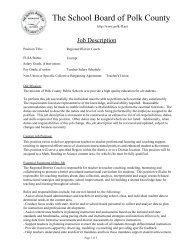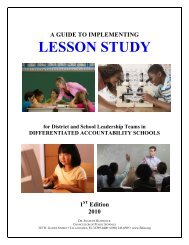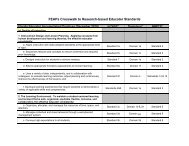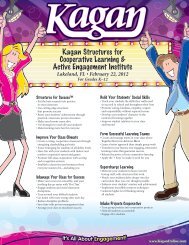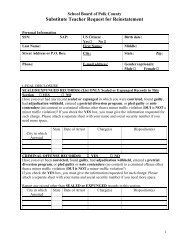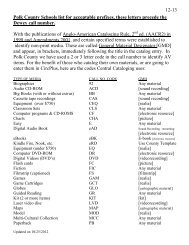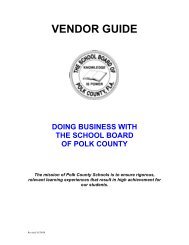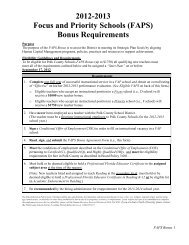Families Building Better Readers - Polk County School District
Families Building Better Readers - Polk County School District
Families Building Better Readers - Polk County School District
Create successful ePaper yourself
Turn your PDF publications into a flip-book with our unique Google optimized e-Paper software.
Model Read Alouds<br />
Goal:<br />
Activity:<br />
Supplies:<br />
Learn how to model for children what<br />
effective readers do through<br />
interactive read-alouds.<br />
The National Reading Panel states that the single<br />
best predictor of children’s eventual success in<br />
reading is how often their parents read to them.<br />
Children learn a lot about what effective readers do<br />
from watching and listening to adults read to and<br />
with them.<br />
In this activity you will model effective reading<br />
practices while reading aloud to your child.<br />
Good readers actively think about what they<br />
read. They sometimes pause to summarize what<br />
they have read, ask themselves questions, make<br />
predictions, and test those predictions as they read further along. They also read with expression<br />
and use their imaginations to make story lines more vivid.<br />
Appealing non-fiction and fiction books that can be on a higher level than your child<br />
can read alone.<br />
What to Do...<br />
1. Select a good book from recommended booklists. See our list online by going to www.justreadflorida.org<br />
and clicking on the <strong>Families</strong> <strong>Building</strong> <strong>Better</strong> <strong>Readers</strong> TM link. You can also ask your librarian or your child’s<br />
teacher for a suggestion. Preview the book ahead of time so you can plan how you will make the reading<br />
interactive.<br />
2. Talk about what you will be reading before you begin the book.<br />
3. Introduce the book by reading the title and author’s name. Note details about the cover illustration. Ask your<br />
child to predict (not guess) what the story might be about based on the title and picture.<br />
4. Read the book at a fairly quick pace using a lot of expression. For example, when the story becomes serious,<br />
slow down and read thoughtfully. When something funny happens, laugh. Make up interesting voices for each<br />
of the characters. This keeps your child’s attention and teaches your child to visualize what is read in the mind -<br />
a strategy effective readers use to improve understanding.<br />
5. Explain unfamiliar words. When you come across a word your child may not know, pause briefly to explain.<br />
Challenge your child to use the pictures on the page or other words in the surrounding sentence(s) to figure<br />
out what the word may mean.<br />
6. Help your child connect to the story. Point out interests, characteristics, or feelings he or she may share with<br />
the characters.<br />
30<br />
F A M I L I E S B U I L D I N G B E T T E R R E A D E R S TM



